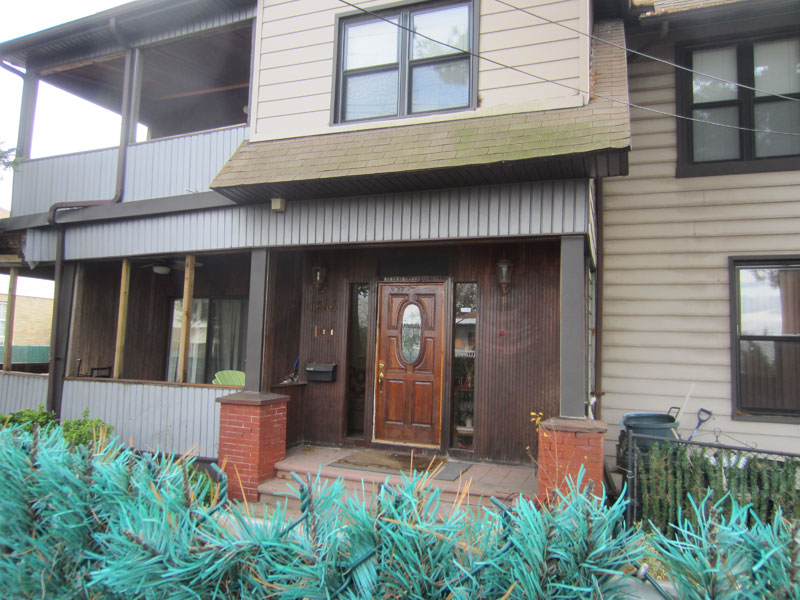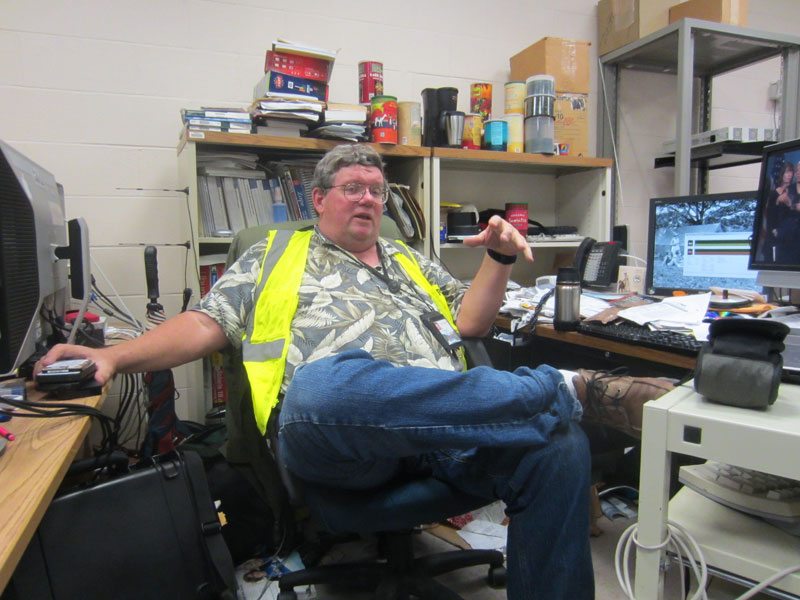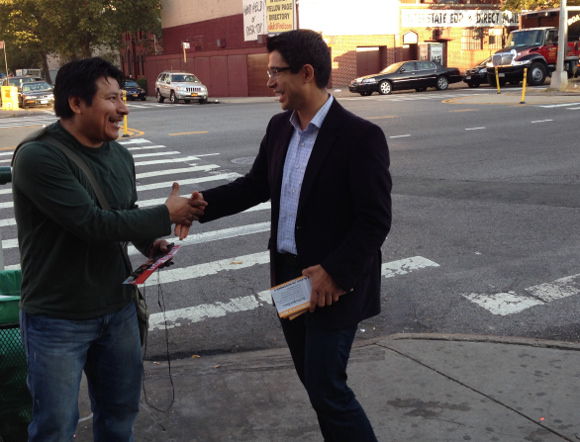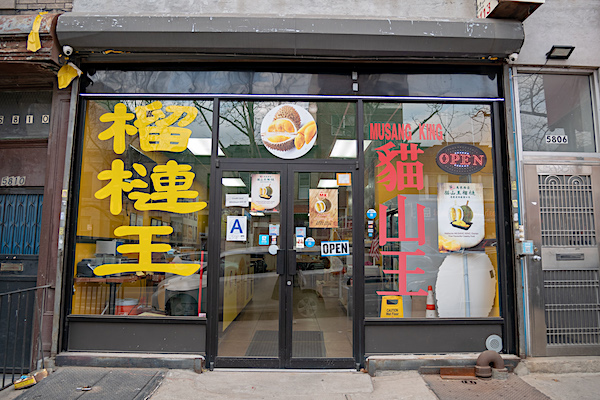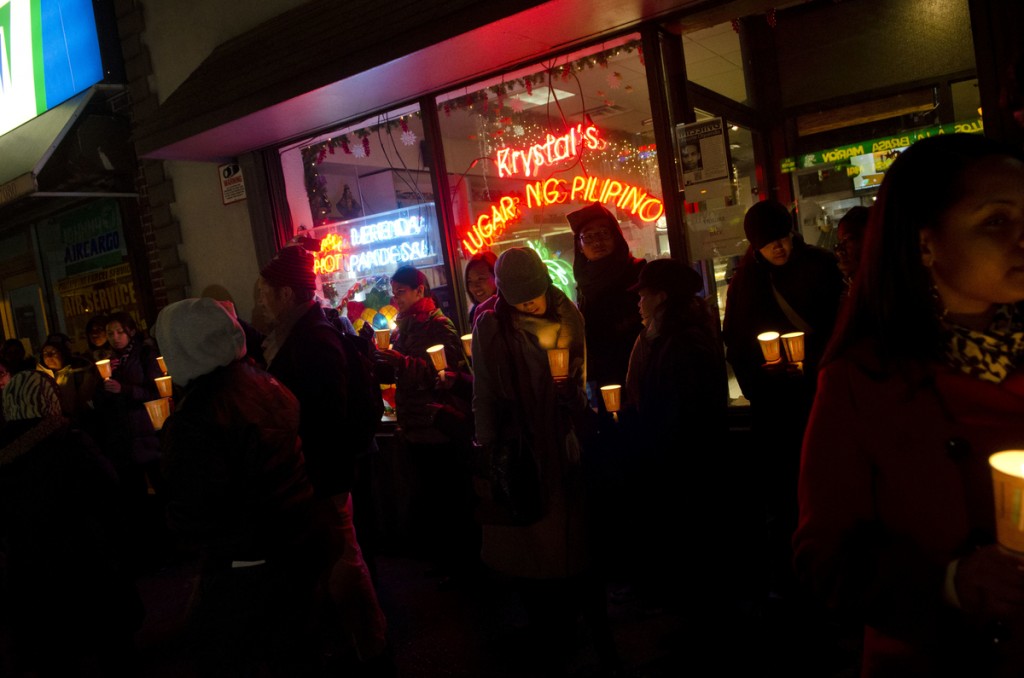Dispatch from Far Rockaway and Jamaica in the wake of Hurricane Sandy.
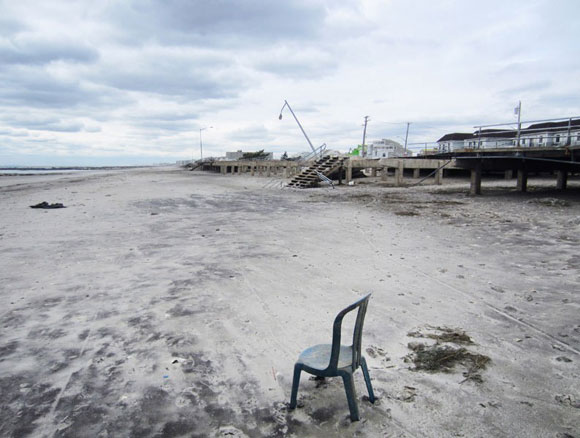
November 3, 2012
The online reports following Hurricane Sandy’s landfall contained some horrific scenes from lower Manhattan and New Jersey. In Chelsea, a building’s façade dissolved; water exploded into a Hoboken Path station. Queens also suffered, although few images have surfaced.
A young woman in Richmond Hill was electrocuted. The secluded neighborhood of Breezy Point in the Rockaways faced a conflagration that engulfed more than 100 houses. In Jamaica, York College had become a full-blown shelter. My friend Harry, a York student and former Navy Seal, was keeping me informed via brief texts: “We are holding. Power flickering, but we have generators,” said one on Monday.
On Wednesday morning, the tail of the storm had passed. I set out to see the devastation and conditions in Queens. I went to neighborhoods surrounding mine: Richmond Hill, Jamaica, and Far Rockaway.
105-05 134th Street, South Richmond Hill
The current death toll from Sandy for New York City (at the time of this writing) is 38. The closest fatality to me was at an address in South Richmond Hill where on Monday evening, Lauren Abraham, a 23-year-old college graduate and make-up artist, had been electrocuted by Sandy’s wrath. According to her neighbor, a power line fell in her driveway. She approached it with the intention of capturing the sparking wire on camera. Barefoot, she stepped into an electrified puddle. Her body convulsed. By the time the authorities arrived, she was dead.
A man with her had tried to seize her, and was restrained. “If not for that, we could be talking about two people dead here today,” neighbor Michelle Stephenson said.
I find the quiet house where Lauren lived. It is large, with porches on two floors and a subdued, pleasing exterior: grey balconies, beige siding, and a maroon entranceway. On the sidewalk, bits of the power line are still visible on the pavement. Strands of yellow police tape tied to a pole shiver in the wind. No pedestrians pass. It is peaceful; only the solitary bunch of white carnations that lay in the driveway hint at a loss.
An older man rakes leaves in front of a nearby house. I ask: Did you hear anything about a woman passing? No, no, I just work here. He looks at me for a moment before he returns to collecting debris.
In another time, Lauren’s story would have lingered in the public mind. But, in the midst of such destruction, her death, like the lying carnations, is too easily missed.
York College, Jamaica, Queens

York College in Queens opened as a shelter for Hurricane Sandy evacuees on Saturday.
On Wednesday, people mill about, smoking cigarettes. The cafeteria is transformed into a registration hall. Middle-aged women in neon orange mesh vests sit behind tables, asking people of all ages (children and aged couples) and backgrounds (black, Irish, Latino) for identification. No photography is allowed. I avoid the crowds and head to meet Jim Ryan, a longtime York employee who, in spite of everything, has come into work. Jim himself is a disaster victim, having sustained severe damage to his beachfront house in Howard Beach.
Jim Ryan left his house in Howard Beach after the surge. In his office lies a government-issued cot; another employee slept there last night. Jim is calm but without his usual mirth. It is clear he has not rested. “We left our home Monday afternoon. I know the tides, I know the weather. I was there for the 1992 Nor’easter. So this time, I waited around to see when the first tide would recede. When the surge came, I knew it was time to go.” When he finally stepped outside to get the car, the wind “almost bowled me over.”
Even with insurance and FEMA assistance, he estimates it will be a year before he is back in his home: Everything was destroyed. “We’re looking for a two-bedroom apartment to rent.”
Even with his own misfortunes, Jim is saddened about the fires in nearby Breezy Point. “This is how the fire blew, horizontally,” he shows me, explaining to me how difficult the situation must have been to fight. “I have a firefighter friend from Breezy Point. Fire trucks don’t pump salt water. And how can you find the hydrants when the water is up to here?” he asks, holding his hand several feet above the ground.
I walk Jim out, and wish him the best. We promise to meet again soon. He is understandably distracted. He walks a few paces, and turns to call out to me.
“Remember my electric car?” I nod yes, recalling the small battery-run hatchback. “All gone,” he says, before turning away.
—
I look for my friend Harry, who has been volunteering since the storm began. I find him on the third floor, keeping an eye on the movie room that has been set up for the children in the lecture hall. “They wanted Hunger Games, so when Harry Potter came on, they got upset.”
Harry hasn’t slept in three nights. “You’re not tired?” I ask him.
“Bro, I’m past the point of tired. The military taught us how to reach 110 percent capacity in extreme conditions. I think I’m there.” His face is rosy and exhibits no signs of exhaustion. “I just want to make sure people get home safely.”
Harry shows me the packs of food that are being served to evacuees: a tube of peanut butter, crackers, self-heating pasta. How do they taste? “I’ve put down about twenty packs,” he says. Before I leave, he reminds me volunteers are still needed.
—
Leaving York, I stop to chat with folks smoking outside. A clean-shaven man with short, greying dreadlocks smiles and nods. He is conversing with a tired, mustachioed man in his early forties. Mustache man is explaining what brought him here. “I just spent $2,000 on hotels for the past two nights,” he says.
“Wow!”
“Yeah, well, we need two rooms; there’s eleven of us.”
“Kids.” Offers the dread.
“And grandkids,” the younger man explains.
The conversation changes to matters in Far Rockaway, where many of the people gathered seem to be from. The storytelling grandfather again leads. “I heard the Boys popped somebody off out there today. They even called in the Blackhawk helicopters out there. All because they said some kids hit Marshalls and a couple other stores.”
A darker-skinned man in an olive jacket and baseball cap joins in. “I’m sure the Boys took something for themselves.” Laughter. “I mean, I could understand. But looting where you live, that doesn’t make any sense to me. You’re destroying your own.”
As the smokers start to disperse, I begin speaking to a man in a cap and hooded sweatshirt. I ask about Far Rockaway. Which roads there are open? They all are, he says. His name is Gary, he has a southern accent and his right front tooth shines with gold when he speaks.
Since I am going to Far Rockaway, Gary tells me his story. “I almost lost my life there,” he says, becoming excited. His sister, Tywanda, was discharged from the hospital over the weekend. In her weakened condition, she didn’t want to leave her bungalow on Beach 26th Street after Hurricane Irene’s false alarm last year.
Eventually, on Monday evening, water began gushing in through the door. He blocked the door, but water started coming through other openings. Outside, water levels approached his waist. He called out to his sister, and she grabbed his back. He climbed out of a window with her and waded to the neighbor’s house. He and the neighbor placed Tywanda on higher ground, while they dumped buckets of water into the bathtub until the water receded.
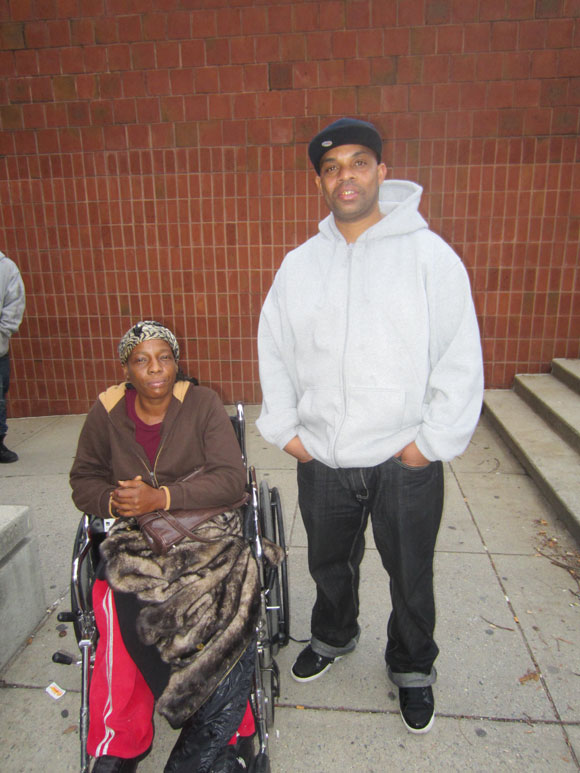 “I’ve been through one hurricane in Florida, but not like this,” says Gary. “Next time they don’t have to tell me to evacuate twice,” he says, smiling with relief. His sister, he says, is over there. I see a woman in a wheelchair, talking to a friend.
“I’ve been through one hurricane in Florida, but not like this,” says Gary. “Next time they don’t have to tell me to evacuate twice,” he says, smiling with relief. His sister, he says, is over there. I see a woman in a wheelchair, talking to a friend.
He introduces her. She excitedly recounts the story again, adding this detail: As a dialysis patient, the salt water, if it reached her chest wound, would have been fatal. But now her mind is elsewhere. “I’m thinking about my children,” Tywanda says. “They live with my cousin. I’m glad they are with family rather than a stranger.”
Mott and Seagirt Avenues, Far Rockaway, Queens
After I left the shelter I met my friend Orando, who lives nearby off of Liberty Avenue in Jamaica. He has lost power. The situation is “bad, but not that bad.” He has friends from Far Rockaway and hears the conditions are even worse than where we are. He wants to see for himself.
As we drive down Guy R. Brewer Boulevard, he warns me that Far Rockaway has no gas. I look at the meter and, seeing a couple of gallons, feel we’re equipped for the ten-mile trip to Rockaway and back.
As we reach Mott Avenue, the sun is beginning its descent. What we notice is how many people are out, congregated near the bodegas. Orando thinks people are running out of food. I think of the workers—Yemenis, Dominicans, West Africans—who slept in their stores, staying open through the storm. For many, these workers were the only life line to the outside world, as emergency assistance was absent.
We snake our way down to Seagirt Avenue and Beach 26th, near the area Gary and Tywanda narrowly escaped drowning. The air is brackish; the roads are sandy. “The ocean was here,” Orando says, pointing at sand and seaweed in strange places.

We try to continue to see the condition of the boardwalk, but the light is receding. We turn back.
On Beach Channel Drive, we find huge, darkened buildings, and cars that look like they froze while fishtailing. The water came and lifted these cars up, shifting them, probably flooding their engines with salt water. “The ocean must have met the Bay,” Orando surmises. Jamaica Bay is nearby, and also had elevated water levels, creating a two-pronged problem for Rockaway residents.

Darkness is pierced by the occasional police flood light. By the number of people on the road, it is apparent that many people stayed here through the storm, and are waiting for electricity. “It’s difficult enough to live in Far Rockaway with power. Can you imagine what it’s like now?” Orando remarks.
It is completely dark when we head back to Jamaica. On Liberty and Sutphin, we see dozens of stopped cars to the left: There is a traffic jam to enter the gasoline station. People are standing next to their cars.
We step outside. One smiling man with a green Guyana shirt tells me, “This is the only place in Queens that has gas. We came all the way from Jersey.” He points to the front of the line; people are arguing, loudly. A man is waving a machete. “I’m in the First World but it feels like the Third World,” Orando quips, while the police jog into the fray.
I drop Orando off on his darkened street.

Beach 62nd Street, Far Rockaway
On Thursday morning, I head deeper into Far Rockaway, towards the beach. On the way, I see National Guardsmen in jeeps, on Mott Avenue. People are lined up for the few pay phones that remain. One water-tossed car lies in the middle of the street. Buses are driving around it.

At Beach 62nd Street, I make my way to the boardwalk. The last stretch of road is covered in sand. I park and walk through sandy banks up an embankment. At first little damage is noticeable; the concrete portions of the boardwalk are relatively intact.
Farther to my right, however, as the boards become wooden, there is serious damage. A gash has split the boardwalk into two strips, warping the surface and making it difficult to walk on. Eventually, I find an area of complete destruction, with stairwells leading to nowhere, and concrete beams holding up nothing.

This used to be a vibrant community of recent immigrants and families who, in spite of low incomes, were able to have access to a beautiful oceanfront beach. I wonder what is to become of it now.

A man videotaping the damage tells me that the ocean water pushed the planks from underneath until they dislodged. His neighbors watched it happen from their second floor window as the water threatened them. They didn’t leave, fearing looters.
—
I return to York College to see how the shelter is faring. Some are leaving, but others are coming in, seeking electricity and food. A white-haired man with a cane and backpack meets me near the entrance. Which way to register, he asks me? I point downstairs. “I just couldn’t take it anymore,” he says.
“Hot food on the second floor,” comes the announcement. I go upstairs to find several Sikh men and women mixed in with the familiar volunteers. I introduce myself to the oldest man I see. “We are the United Sikhs,”he says. “We provide hot food in times of need. The OEM called us, so we came here.” It makes sense: On Sundays, Sikh families compete to sponsor the langar or communal meal, in which all Sikhs, regardless of social class, sit together and eat. This work seems like a natural extension of that.
I tell them about the conditions in Far Rockaway. “We can send our food truck,” says one senior. As I leave them, I see people sitting on their cots, unrolling their roti, and eating the dal and rice slowly, seemingly relishing the warmth of the food.
As I leave to go home, people are still arriving and seeking shelter. With the impressive, continued operation at York College, the activation of groups like United Sikhs, and the return of some public transportation, I allow myself to think things are improving in Queens. Approaching the station on Liberty where tensions ran high yesterday, the car traffic seems to be modest. I only have a half-tank myself, and I think that perhaps tomorrow I can come back and fill up.
I stop at the light across from the station. It is only then that I see the line of cars has been replaced with a line of dozens of people. Unmoving, the line snakes back, out of sight, each person carrying red, portable gasoline containers, waiting, as the night falls harder.
To volunteer at the Hurricane Sandy shelter located at York College, visit: CUNY-York College, 94-20 Guy R. Brewer Boulevard, Jamaica, Queens, 11451. Or call York College Public Safety at (718) 262-2222. To volunteer or assist with food contributions or distribution in Far Rockaway, click here.

